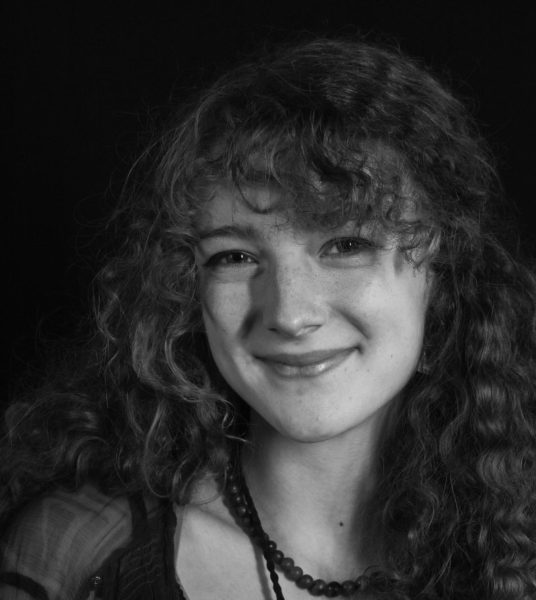Staffing shortages are a prevalent issue school districts are facing across the nation, and Columbia Public Schools (CPS) is no exception.
The district has been struggling with a significant surge in staff resignations in recent years. Between 2019 and 2022, staff resignations increased by 55% and staff retirements increased by 85%, according to the Columbia Daily Tribune. These shortages have forced CPS to find ways to hire new employees and adjust to having fewer workers available.
Michelle Holz, Chief Human Resources (HR) Officer at CPS, said the staffing shortages began in 2020 with the COVID-19 pandemic, but they have continued to get worse since then. She said the causes of these shortages are not unique to the district.
“This is an issue across the U.S., not an issue isolated to Columbia,” Holz said. “There are more jobs than there are people.”
Holz said CPS has been fortunate enough to avoid having widespread shortages across all departments, with areas like the HR department remaining largely unaffected. However, while there have not been many staffing shortages in elementary schools, middle and high schools have been significantly impacted.
“We have had difficulty with [filling] secondary teaching positions such as math, science and special education teachers,” Holz said. “Furthermore, we have had some challenges hiring paraprofessionals, classroom aides and other hourly staff.”
Special Education
RBHS Building Chair Learning Specialist, Errin Hagen, said that the deficit in special education staff members has put a strain on the existing employees. As of early September, the department had filled approximately 75% of its positions, a vast improvement from the beginning of the year, during which they were only at 25% capacity. Hagen said the lack of adequate staff is hard on the teachers, parents and especially the students, many of whom benefit from a consistent routine.
“In our special education classes that work with students with very significant needs, [such as] developmental delays, cognitive delays [or] language, they need a lot of support,” Hagen said. “Not having those adults really puts a lot more pressure on the adults who are there because when we do get lucky enough to have a substitute come in as a [paraprofessional], they are not allowed to physically work with a student.”
While substitutes can provide temporary supervision, the physical needs of the students must be met by paraprofessionals or individuals with specific training. To deal with the shortage of paraprofessionals, Hagen said her department has had to reduce the staff in some of the classrooms with students of less significant needs to put more staff in the classrooms with students of greater needs. Sometimes, teachers and administrators who are not presently teaching a class may need to step in to provide additional support. However, not all of the solutions used in the past have continued to be effective. According to Hagen, CPS holds a contract with a nursing agency, ATC Healthcare Services of Greater St. Louis, to provide caregivers who can fulfill the physical responsibilities that paraprofessional substitutes are not permitted to handle. This year, the agency has faced challenges in hiring a sufficient amount of people, a setback Hagen said was not previously an issue when CPS was working with Phoenix Home Care & Hospice, a Columbia-based company.
With other schools across the nation experiencing similar difficulties, the problem of staffing shortages in special education extends far beyond CPS. According to the U.S. Department of Education, 45% of schools today report vacancies in special education roles, and 78% of schools report difficulty in hiring special education staff. This issue has been exacerbated by the COVID-19 pandemic, in which the entire country saw a dramatic decrease in employment rates of all professions.
For the special education department, part of the staffing shortages issues are due to the increasing difficulties faced when applying and working. To become a paraprofessional in CPS, applicants are required to earn 60 or more college credits, complete a 20-hour substitute training course or pass the paraprofessional exam. Once they begin teaching, special education teachers are expected to simultaneously teach and manage their individual education plans (IEPs). In addition, where general education teachers teach five content classes and one supervision class during eight-period days, special education teachers teach six content classes, Hagen said.
Because of the immense responsibility of being a paraprofessional, many will eventually decide to quit. In 2022, six RBHS paraprofessionals left their positions, five of whom resigned. This year, in 2023, three RBHS paraprofessionals moved to different positions in the school, leaving vacant positions that have since been filled again.
Hagen said the intense workload for a paraprofessional can be overwhelming, but she hopes that with a potential salary and training increase, people will feel more confident in their ability to work as a paraprofessional.
“The people that we have working in our programs work very hard, and there’s a high rate of burnout, mentally and physically, because of all the needs that the students have,” Hagen said. “It’s hard to find quality people, [but] we’ve hired several new folks this year, and they really do have good skills. So I’m very happy with that.”
Custodial Department
Like special education, the custodial department at RBHS has also witnessed an increase in staffing shortages since COVID-19. RBHS Supervisor of Custodial Services, Dallas Thomas, said that as of late November, the department is short of around two to three people. At RBHS, custodians typically conduct an eight-hour or four-hour run, during which they are assigned to a specific area to clean. While this is typical for regular upkeep of the school, custodians must also accommodate the events that RBHS hosts, like sports games and fundraisers, which can add to an already demanding workload.
“[Staffing shortages] just makes it a lot more work on the [other custodians],” Thomas said. “There are nights that we just can’t get everything done because we have [both] events and regular work. When we don’t have somebody covering [an] area, it’s more hectic because then they don’t have [the] whole eight hours to spend on their area [while] they’re trying to help catch up other [custodians].”
To maximize their working efficiency, Thomas said the custodians have developed a team system where they occasionally work together to complete their areas. For the most part, everyone tries to pitch in where they can.
“This building [is] the biggest and the busiest. We’re constantly being used for events, so it can get overwhelming to some of the crew when they have an eight-hour run and we have three different events going on,” Thomas said. “But for the most part, I do what I can to relieve the stress so they only have to focus on what they need to.”
The issue of custodial labor shortages in CPS is not unique, even to schools. Shopping malls, corporate offices and gyms are only a handful of the establishments struggling to find workers as well. The low employment and retention rate of custodians lends itself to multiple factors. Being a custodian can mean dealing with physically demanding work, odd shift times and a low wage. In 2022, U.S. Medicine reported nearly 70% of medical facilities experienced “severe custodial worker shortages,” almost a 30% increase since 2021.
“The turnover in custodial [used to be] pretty good,” Thomas said. “But since COVID-19, it’s been a little harder to get people to come in. I mean, we’ve had shortages in the past, but I would say COVID-19 really put a toll on us.”
To attract potential custodial applicants, Thomas said CPS has held employment fairs and posted online job ads. However, the turnout for these listings is sparse and less than ideal. Thomas said even with those who do apply, few show up to the interview.
“We might always have shortages. It’s just the rate of the turnover and custodial services,” Thomas said. “It’ll probably fluctuate here and there. We were really bad for a while, [though] it seems like it might be getting a little bit better. But I mean, it could go right back down. You just never know.”
Teachers
Holz said one of the ways CPS is trying to combat teacher shortages is by offering increased salaries. The Missouri legislature passed a bill Jan. 2023 that provides the state $21.8 million to increase teacher salaries for the 2023-24 school year. CPS has increased teachers’ minimum salaries from $40,250 to $40,900. Holz said CPS hopes increased pay will incentivize more teachers to take jobs at CPS.
According to the CPS job listings, CPS has 95 open positions as of Dec. 14. To deal with these shortages, Holz said CPS has taken up new measures to account for having fewer teachers, as well as finding ways to get new teachers to take jobs at CPS.
“CPS has been providing increased payment for teachers to cover supervision [of students] and for covering other classes,” Holz said. “With recruiting, we have had to be more flexible and aggressive.”
Although staffing shortages continue to be a problem for CPS, Holz said they do seem to be getting better.
“It has improved,” Holz said. “We are fortunate to have several educational institutions surrounding Columbia that provide teachers, and our district is desirable for many prospective teachers.”
How do you think CPS should deal with staffing shortages? Let us know in the comments below.
















































































